What has the look of a draft horse but the grace and agility of a light equine? The Friesian horse! These beautiful steeds from the Netherlands were once the warhorses of medieval Europe, carrying armored knights into battle. Today, they're most commonly used for drawing carriages and horseback riding. Many owners also explore CBD for horses to support their well-being and overall health.
Friesians are skilled in dressage, a type of exhibition riding that tests obedience, flexibility, and balance. The Friesian is one of Europe's oldest breeds, and they boast a rich history. From training to personality and everything in between, we've got you covered on what you need to know about this Dutch equine.
Friesian Characteristics
Friesian horses have powerful bodies, an abundance of hair, and high knee action. "Knee action" is a term that equestrians use to describe the degree to which a horse raises its knees when trotting. Like the Missouri Fox Trotter, Friesians are renowned for their high-stepping trot, making them well-suited for dressage.
There are two different varieties of Friesians: Baroque and Modern. Baroque Friesians appear similar to how the horse has looked for centuries. Modern Friesians have been refined to be lighter and taller, like a sport horse. The Modern Friesians excel in dressage, eventing, and show jumping, though dressage is their most common talent.
Like the Suffolk Punch, the more muscular bodies of Baroque Friesian horses are well-suited to carriage driving and fieldwork. However, both Baroque and Modern Friesians can act as a sport or workhorse.
Friesians are warmbloods, meaning they are middle-weight. "Warmblood" is a classification that distinguishes a breed from heavier draft horses ("cold bloods"), and lighter, saddle horses ("hot bloods"). Draft horses generally do physical labor, while saddle horses often race. When breeders developed horses that could both work or ride, they called them warmblooded.
Friesian Horse Size
The Friesian, male or female, stands 15 to 17 hands (60 to 68 inches) tall from hooves to withers. If you're unsure about where the horse's withers are, it is the ridge between the animal's shoulder blades. Modern Friesians are slightly taller than Baroques, though not by much.
These are muscular creatures, and they tend to weigh roughly 1,200-1,400lbs. The lifespan of a Friesian is about 25 years, which is average for equines.
Friesian Horse Personality
The Friesian horse is trainable, though at times they can be stubborn. While they are never aggressive, their strength makes them best left in the hands of riders who already have some experience with horses. Friesians are also known to be intelligent, gentle, loyal, and calm.
Friesian Horse History
Friesian horses are originally from Friesland, which is a province of the Netherlands. Equestrians of Holland still have a strong affinity for Friesians. To this day, the Koninklijke Vereniging Het Friesch Paarden-Stamboek ("Royal Friesian Horse Studbook"), established by Frisians in the late nineteenth century, remains the main Friesian horse association.
In the early 20th century, horses were not used for driving and agriculture as much as they had been before. Around this time, the Friesian breed almost faced extinction. However, when World War II caused a furl shortage, Dutch farmers used horses to work their lands again. This led to the Friesian numbers bouncing back.
Friesians in North America today are descended from stock introduced to the continent in 1974. A previous attempt to bring the breed to North America was made in the seventeenth century, but those horses were bred with other equines to the point that they could no longer be called true Friesians.

How to Care for a Friesian Horse
All horses require a high level of care, and the Friesian is no different. You should always ensure you feed them a nutritious diet, provide them with adequate exercise, and keep up with regular veterinary care.
Also, Friesian horses should have their stalls mucked out in the morning and night. "Mucking" is the removal of manure and urine from a horse's living area. Check their hooves daily and pick out any rocks or debris. These animals may be big and tough, but no one likes a pebble in their shoe.
If you really want to pamper your Friesian, consider adding some CBD (cannabidiol) to their daily routine. CBD is a natural hemp extract that promotes balance and wellbeing in horses, and it can boost several aspects of your equine's condition. Cannabidiol has a soothing effect, so it can assist in training and calm scared or overstimulated horses. Some owners also use it to comfort their mount's muscles and joints.
You can purchase CBD pellets for horses, which offer an impressive range of nutritional benefits in addition to CBD. If your steed isn't a fan of the pellets, you can also try CBD oil for horses. The oil is super easy to administer — just put a few drops into your horse's mouth as needed!
Other Tips
Fly spray and insect repellant are helpful in the mornings and evenings, especially during the summer. But, be sure to buy veterinarian-approved repellant that won't irritate your horse's skin.
If you keep your horse outside at night, they may need a body blanket. But this depends on their hair, sweat levels, and the climate. If you body-clip your Friesian, it will most likely need a blanket at night. "Body-clipping" is the strategic removal of hair on certain areas of a horse's coat to assist perspiration.
The first few times you blanket your horse, feel their body periodically throughout the night to check for excessive heat or sweating. During winter, place blankets on your horse in the evening and remove them in the morning. Some companies will custom-fit their blankets to Friesians' muscular bodies so that the horses are perfectly snug!
Friesian Horse Training
Friesian horses respond well to training, especially if you're training them in dressage. The word "dressage" comes from the French word which means "training." Dressage is a competition in which judges score a horse's ability to perform specific movements.
A horse competing in dressage will trot around the field, the rider guiding it through the various moves. Friesians' high-stepping gait makes them naturally great at "the passage" movement.
Even if you're not entering your Friesian in any competitions, an equine still needs to get its exercise. Take your horse outside every day so it can walk around, get some sunshine, and roll in the grass. If you're looking for more controlled exercises, try riding in the ring or on a trail.
Nutrition and Feeding for Friesian Horse
As a guideline, a horse should eat 1.5-2.5% of its body weight in forage every day. Forage refers to long-stem hay, pasture grasses, and legumes. An equine vet can help determine your horse's specific nutritional requirements. The amount of food your horse consumed daily should correlate with its activity level.
Thanks to centuries of selective breeding, Friesians are big horses with big bones. Keep an eye on their weight, as general feeding guidelines might not be the best diet for your specific equine's bone structure, energy levels, and daily workload. Discuss options with a veterinarian and send your pasture grass or hay in for lab testing to see if you should modify your horse's diet.
Forage is the cornerstone of an equine's diet, but it's not the only thing every Friesian needs. If your horse isn't getting all the nutrients it needs, a grain or nutritional supplement might be necessary. Grains can target a particular deficiency an animal has, such as a lack of fiber or carbohydrates.
Popular grains include oats, barley, corn, wheat, and milo. Once you've discussed your horse's nutritional needs with an expert, they can advise on whether grain is recommended, as well as what kind. The horse will also need plenty of water (5-10 gallons daily).
A Friesian needs the same trace minerals as other horses (zinc, copper, manganese, and cobalt). These minerals help the animal's growth, coat, and immune system. An easy way to get your horse the trace minerals it needs is by using a salt block.
RELATED: MSM For Horses [Benefits, Dosages, & Feeding Suggestions]

Coat Color And Grooming
Friesian horses have incredible hair! It's one of their most distinguishing features and also one of their biggest hassles. A thick mane and tail, and feathers on the lower legs, make this horse require more grooming than other breeds.
After training, hose the sweat off of your horse to minimize flies. A full, deep bath at least once a month makes for an especially happy equine. Use a shampoo with low suds, as this will make it easier to handle the large volume of hair you'll be working with. You may have to scrub a little longer and harder than with other equine breeds.
You can wash a Friesian's feathers (the hair on their lower legs), tail, and mane similar to how you would clean your own hair. Shampoo and conditioner are great for these thick-haired beauties.
Use a towel to dry your Friesian after a quick hose-down. If you've given the horse a full bath, use a blow-dryer to remove all moisture. Blow-drying is essential for this breed because its heavy coat can trap moisture, leading to hoof damage or bacterial growth.
Trimming
We've talked a lot about the Friesian's hair, but how do we trim it?
- Feathers: Hair should be clipped behind the knees and on the cannon bone (which is similar in position to our shin bones). You should also trim below and around the fetlock (ankle) so that no hair drags along the ground.
- Tail: When trimming the tail, try to keep it neat while maintaining its thickness. Cut evenly at the lowest point of the tail, being sure not to taper out. The tail should be thick all the way to its end.
- Mane: Avoid trimming the mane along the bottom, as it rarely comes out even. Instead, tease out the hairs that are longest and remove them with a pulling comb. However, don't be afraid to let their hair grow out. Generally, a long mane is the pride of Friesian owners, and many will French braid their horse's hair to keep it neat and tidy!
Colors
Black is the most common color for a Friesian. Chestnut, bay, and grey coats existed in the past, but those colors have largely been bred out of the line. Some registries will not accept a Friesian stallion if it has a non-black color gene, even if that stallion appears black.
Additionally, the Friesian Horse Association of North America now only recognizes Friesian horses with black coats. While white markings are not typical, many registries allow for a small white star on the forehead.
Friesian Horse Health Problems
Friesians are generally healthy horses, but there is still the possibility of some health issues. These can include insect bite hypersensitivity, dwarfism, and hydrocephalus.
RELATED: Best Home Remedies for Horse Colic [Full List]
Insect Bite Hypersensitivity
You may see some skin damage on your Friesian horse during particular seasons, and the cause could be insect bite hypersensitivity (IPH). This is an allergic reaction to Culicoides (gnat-like creatures), black flies, stable flies, and horn flies.
Excessive itching, hair loss, or thickened skin could be signs of IPH. Preventative measures vary based on which insect is giving your horse grief. Be on the lookout for when and where your horse develops symptoms. Knowing the cause of your horse's IPH can help a veterinarian prescribe the appropriate treatment.
Culicoides hang around standing water, stable flies are attracted to rotting vegetation, and both love manure. Be sure to keep your stables free from droppings and rotate food and water.
Horn flies love cattle manure, which might explain a Friesian getting bites in the pasture. Horse and deer flies are drawn to vegetation and water, while black flies can usually be found around running water.
Before heading to the store for insect-repellent, remember that some horses can develop allergies to topical products. Baths using colloidal oatmeal, pramoxine, or 1% hydrocortisone shampoos can soothe and hydrate irritated skin. If your horse's scratching becomes a problem, steroids and antihistamines may offer some relief, but consult with a veterinarian first.
Dwarfism
Dwarfism is an inherited condition that results from one or both of the foal's parents carrying the recessive gene. If your Friesian has dwarfism, it may have short limbs, bowed forelegs, a short neck, and a broad chest. Dwarfism is not treatable.
However, if you're breeding Friesians, tests can help you find the genetic mutation that causes this condition. When breeding, it is best not to pair two horses that carry the recessive gene, as there is a 25% chance the foal will have dwarfism.
Hydrocephalus
This is an inherited developmental disorder that generally affects foals. The horse's head fills with more fluid than necessary, causing it to swell. This head growth typically happens in the womb, causing birth to occasionally be fatal for the foal or the dam (the horse giving birth).
Roughly 15% of Friesian horses carry this recessive trait. Unfortunately, there is no treatment for hydrocephalus.
How to Get a Friesian Horse
EquineNow has a great selection of Friesian horses. The site's filters allow you to be incredibly specific in your search!
Have a minimum or maximum height in mind? Looking for a stallion? EquineNow has filters for both, including those for searching by state, discipline (such as pleasure driving or racing), gender, color, and many more. Prices for Friesians generally sway between $3,000 all the way up to $50,000, depending on the horse's discipline, lineage, and previous training.
The Friesian Horse Association of North America (FHANA) is the authority on the breed in North America, though they are still subject to the official studbook. The Koninklijke Vereniging Het Friesch Paarden-Stamboek (KFPS), located just outside of the Netherlands, is the publisher of the Friesian studbook. In fact, the Friesian Horse Association of North America's stated goal is “To Protect and Preserve the KFPS Friesian Horse."
A Friesian stallion can get breeding approval from FHANA, but the selection process is rigorous. There are just about 100 Friesian stallions worldwide that have been studbook approved, and only a handful of new horses get accepted each year.

More About This Horse Breed
Friesians are beautiful horses that possess an impressive balance of strength and grace. Their thick hair, dark coats, and gentle nature make them appear majestic, like they trotted right out of a fantasy movie. They may be pretty, but these horses don't have to be destined for shows.
Trail riding, driving, and even light farmwork can be handled well by this breed. Whether you're shopping around or just an enthusiast, the Friesian horse is one of a kind.
Read Next: How Long Can Horses Live?

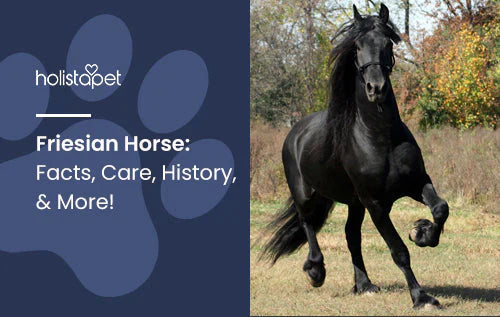
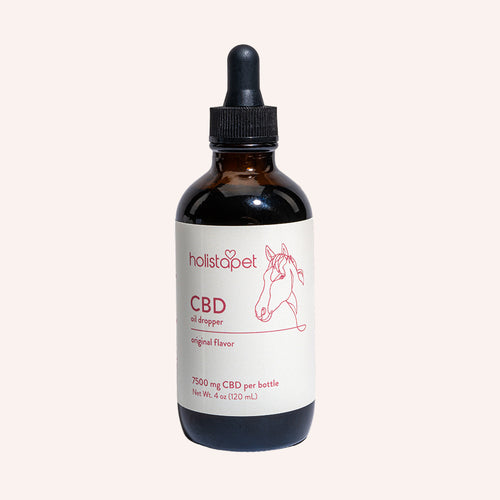 CBD Oil for Horses - Fast Acting
CBD Oil for Horses - Fast Acting
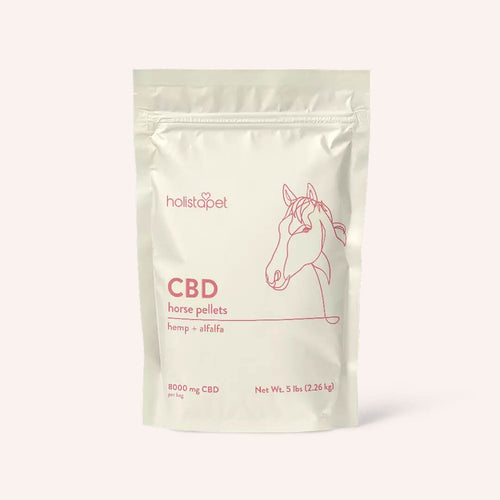 CBD Pellets for Horses - Easy Dose
CBD Pellets for Horses - Easy Dose
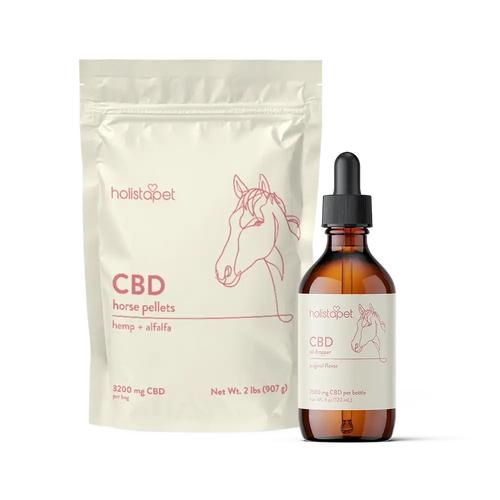 "Ridin' On My Horse" Bundle - Highly Rated
"Ridin' On My Horse" Bundle - Highly Rated


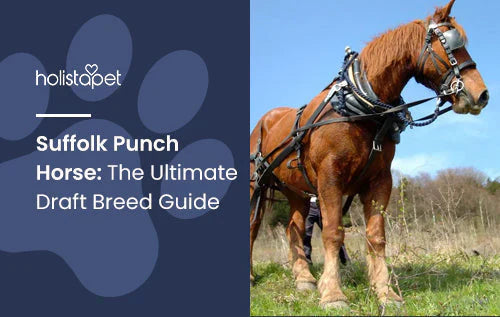

Leave a comment
All comments are moderated before being published.
This site is protected by hCaptcha and the hCaptcha Privacy Policy and Terms of Service apply.